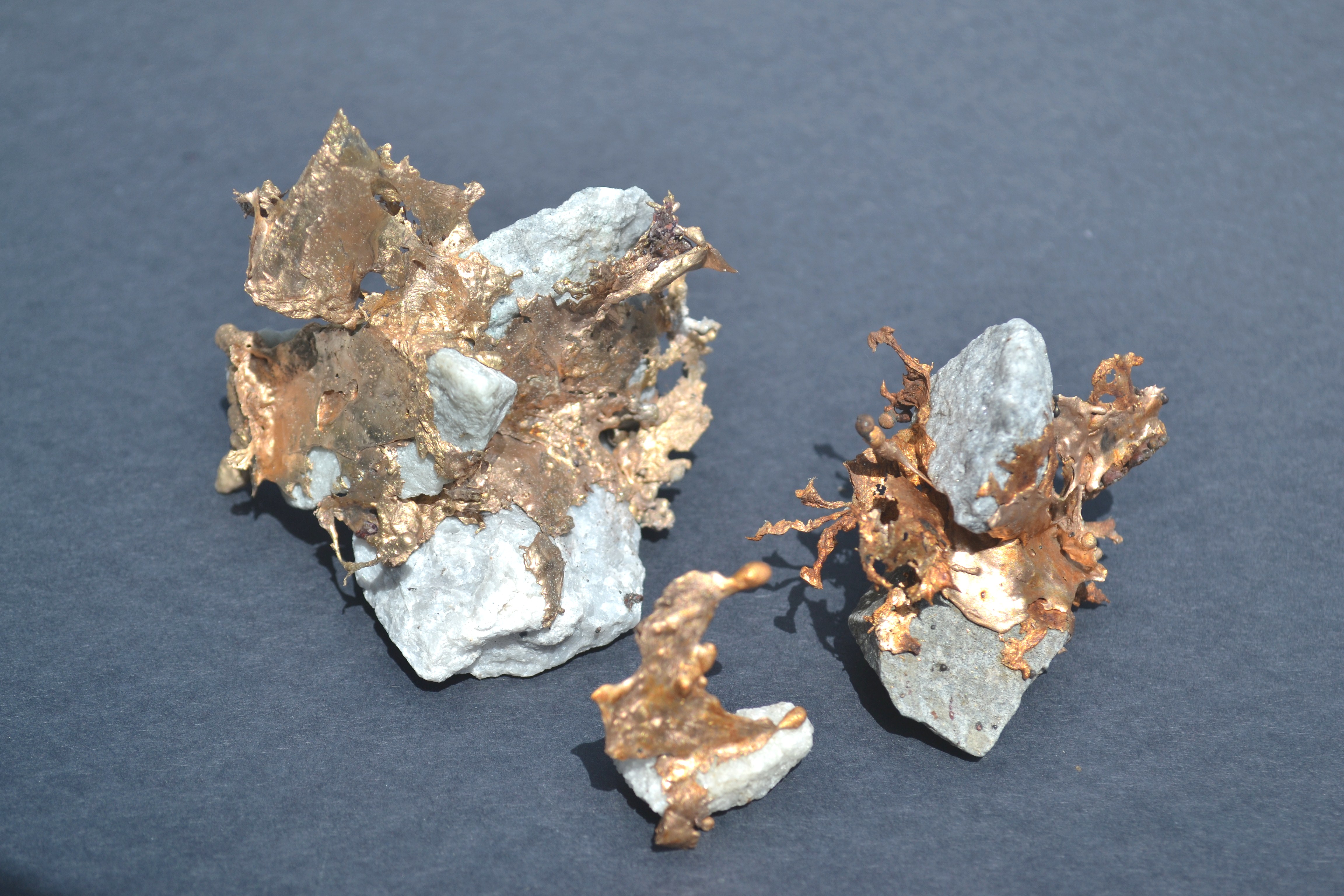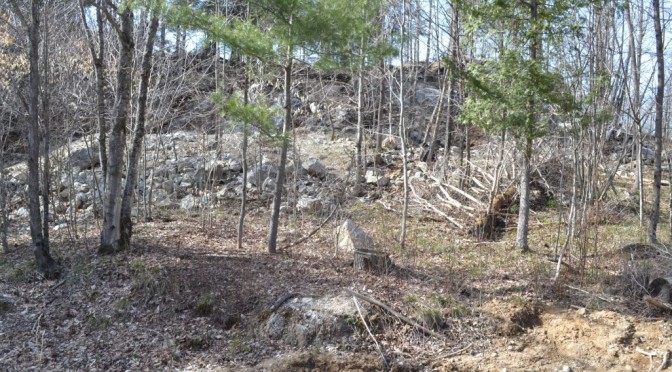An article I wrote for the WCGMC News in December, 2013
One of the more popular mineral locations for upstate New York rockhounds this year was Rose Road off Route 3 in Pitcairn, a daily fee site owned by Mr. Richard LaPlatney who lives at the property. Although the silicate skarn mineralization flanking the Grenville age white marble hill has been visited by mineral collectors dating back to 1880’s the location seems to have been rejuvenated after Walter highlighted the mineralogy and collecting history in his 2007 book “Field Collecting Minerals in the Empire State”.
The major “digging” there this year was focused on the first site encountered after passing LaPlatney’s home just off of Rose Road. At first glance the exposed rock seems to be dominated by lavender diopside, calcite, albite and red brown phlogopite.. A Scanning Electron Microscopy/Energy Dispersive Analysis (SEM/EDA) of the lavender diopside indicated elevated Ti, likely substituting into the Mg spot in the lattice to generate the lavender color (S. Chamberlain, pers. comm.). There is also less Fe in the purple diopside than in the green version found just a few hundred feet farther up the road.
However the big find and activity this year was not in search of diopside, the light blue apatite, or even the brown titanite that is intergrown with albite and calcite. No, the main trench 20-30’ uphill from the entry road was dug in search of scapolite. In the field the light blue mineral is rather unassuming, often rimmed in white where it is altering to natrolite and clays. It is usually intergrown or overgrown with calcite. But digging in the main trench or searching the discards that fell or were pitched down the hill can be rewarding.
Scaoplite is a solid solution between marialite (Na4(Al3Si9O24)Cl) and meionite (Ca4(Al6Si6O24)CO3) and occurrences are often an irregular mixture of the two end members. In addition to informing us that the Rose Road scapolite is very close to a 50% mixture of the two end members Steve Chamblerlain sent us a picture of intergrown scapolite crystals collected this year. The specimen is about 4” high.
 Scapolite from Rose Road. Specimen and photo by Steve Chamberlain.
Scapolite from Rose Road. Specimen and photo by Steve Chamberlain.
Scapolite has two distinct cleavage directions and also fractures conchoidally such that full crystals such as these are not likely to be exposed by breaking the Rose Road skarn rock. Rather they can be exposed by dissolving encasing calcite.
The Rose Road scapolite becomes much more attractive when subjected to a black light. The fluorescence is bright yellow to short wave UV. Anyone interested in fluorescent minerals must make a trip to Rose Road.
For me the highlight of my July visit to Rose Road came while walking around the satellite tower atop the hill. I was with a group of collectors from the Rochester Academy of Science when I heard from across the pad that someone had found native copper. Of course, you did, I thought, but as he approached the rest of us I could see that is exactly what he was showing us. In fact when we went back to where he had collected it there was a small mound of crushed aggregate covered with native copper. We collected and divided the loot and sat back to reflect on what we had.
The occurrence was at the base of a large metal fence post flanking the satellite tower and a significant mass of once insulated copper wire had been ravaged along the post. It seems that lightning had likely struck the fence and remobilized the copper to the ground where it had annealed on the marble aggregate. I’m calling them copper fulgurites. The larger one in this grouping is over 4” wide and 3” high and three marble cobbles are forever joined by the annealing copper. The smallest is a great 1” thumbnail. In a region where most of the mineralization is over 1 Billion years old, my prized pieces may have formed this year !
 Copper fulgurites from satellite tower off of Rose Road. Largest specimen is 3″ high.
Copper fulgurites from satellite tower off of Rose Road. Largest specimen is 3″ high.
The Rose Road, Pitcairn, NY location was not only a popular target for field collectors this year, but it was also the subject of two publications.
Chamberlain and Robinson (2013), The Collector’s Guide to the Minerals of New York State, Shiffer Publishing, pg. 46-49.
Walter, M. (2013), Four collecting sites in St. Lawrence County, Rock and Gem, October, p. 34-37.
